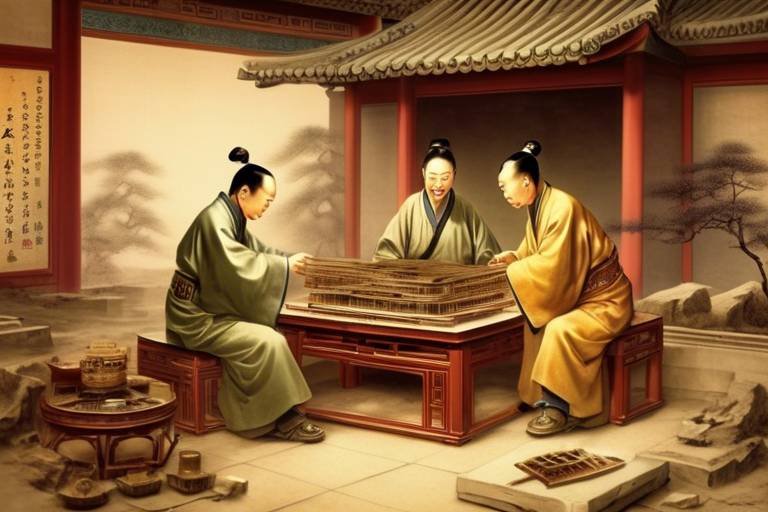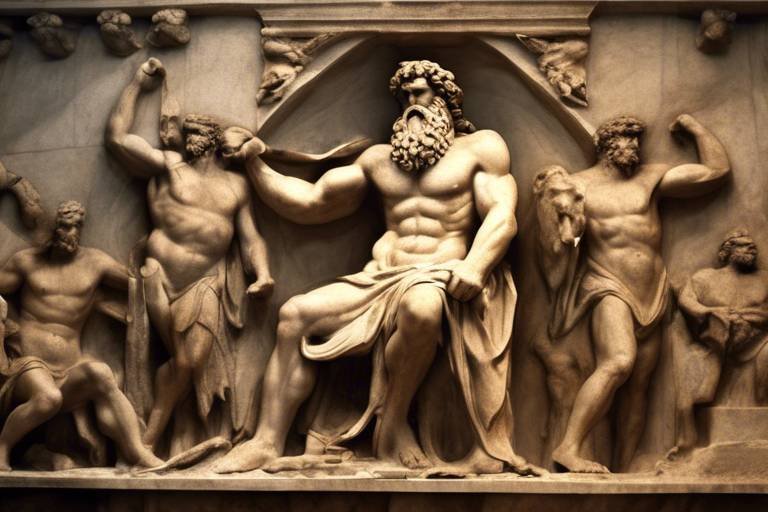The Mystery of the Ancient Etruscan Art
Have you ever wondered about the mysterious allure of ancient Etruscan art? Step into the world of the Etruscans, a civilization shrouded in enigma, that flourished in central Italy long before the grandeur of Rome took center stage. Their art, a tapestry of symbolism, techniques, and cultural significance, beckons us to unravel its secrets.

Etruscan Art Techniques
The of the ancient civilization are a testament to their creativity and craftsmanship. One of the most notable techniques mastered by the Etruscans was bronze casting, a method that allowed them to create intricate sculptures and decorative items. The skill and precision required for bronze casting showcased the Etruscans' dedication to their art.
Another prominent technique in Etruscan art was terracotta sculpture, where artists molded clay into detailed figures and reliefs. The use of terracotta allowed for the creation of durable and expressive artworks that adorned temples, tombs, and public spaces. The Etruscans' expertise in terracotta sculpture brought life to their artistic vision.
Additionally, the Etruscans were known for their vibrant frescoes, which adorned the walls of tombs and buildings. These colorful paintings depicted scenes from mythology, daily life, and religious rituals, showcasing the Etruscans' storytelling prowess and aesthetic sensibility. The use of frescoes added a dynamic and immersive dimension to Etruscan art.
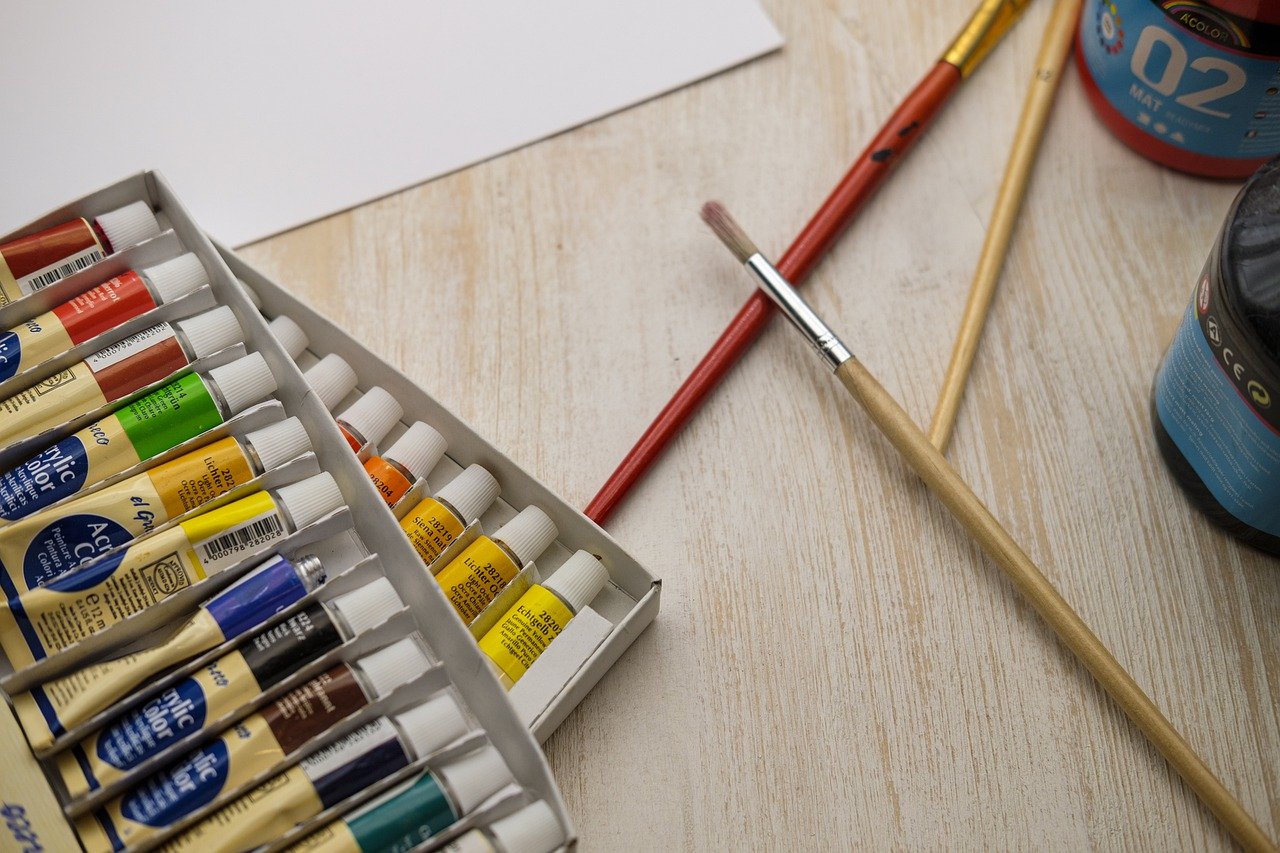
Etruscan Symbolism
Delve into the symbolic meanings embedded in Etruscan art, from depictions of mythical creatures to scenes of everyday life. The Etruscans infused their artworks with layers of meaning, using symbols to convey messages about their beliefs, rituals, and society. For example, the image of the Chimera, a mythical creature with the body of a lion, head of a goat, and tail of a serpent, symbolized the Etruscan fascination with the supernatural and the unknown. These symbolic representations were not merely decorative but served as a visual language through which the Etruscans communicated their worldview.
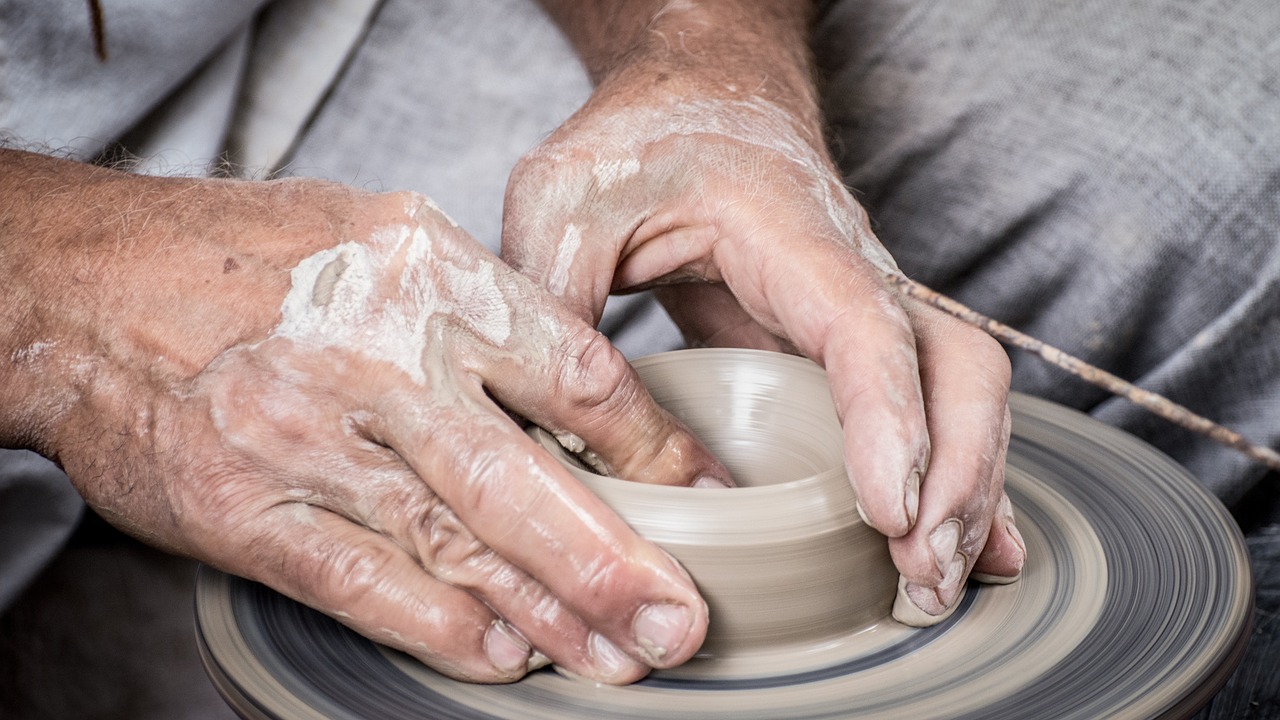
Etruscan Funerary Art
When exploring the world of Etruscan funerary art, one is immediately struck by the intricate and elaborate nature of the artworks created by this ancient civilization. The Etruscans had a unique relationship with death, viewing it as a transition rather than an end, which is reflected in the art they created to honor and commemorate the deceased.
One of the most prominent forms of Etruscan funerary art is the sarcophagus, elaborately decorated with scenes from mythology, daily life, and funerary rituals. These sarcophagi not only served as containers for the deceased but also as a means of conveying messages about the afterlife and the importance of proper burial practices.
Tomb paintings also played a significant role in Etruscan funerary art, with vibrant frescoes adorning the walls of burial chambers. These paintings often depicted scenes of the deceased enjoying the afterlife, surrounded by loved ones and mythical beings, providing a glimpse into Etruscan beliefs about the underworld.
Additionally, burial goods found in Etruscan tombs showcase the wealth and status of the deceased, as well as their personal belongings and items believed to be necessary for the journey to the afterlife. These artifacts offer valuable insights into Etruscan society, economy, and religious beliefs surrounding death.
Overall, Etruscan funerary art serves as a window into the cultural and religious practices of this ancient civilization, highlighting their beliefs about death, the afterlife, and the importance of honoring the deceased through art and ritual.
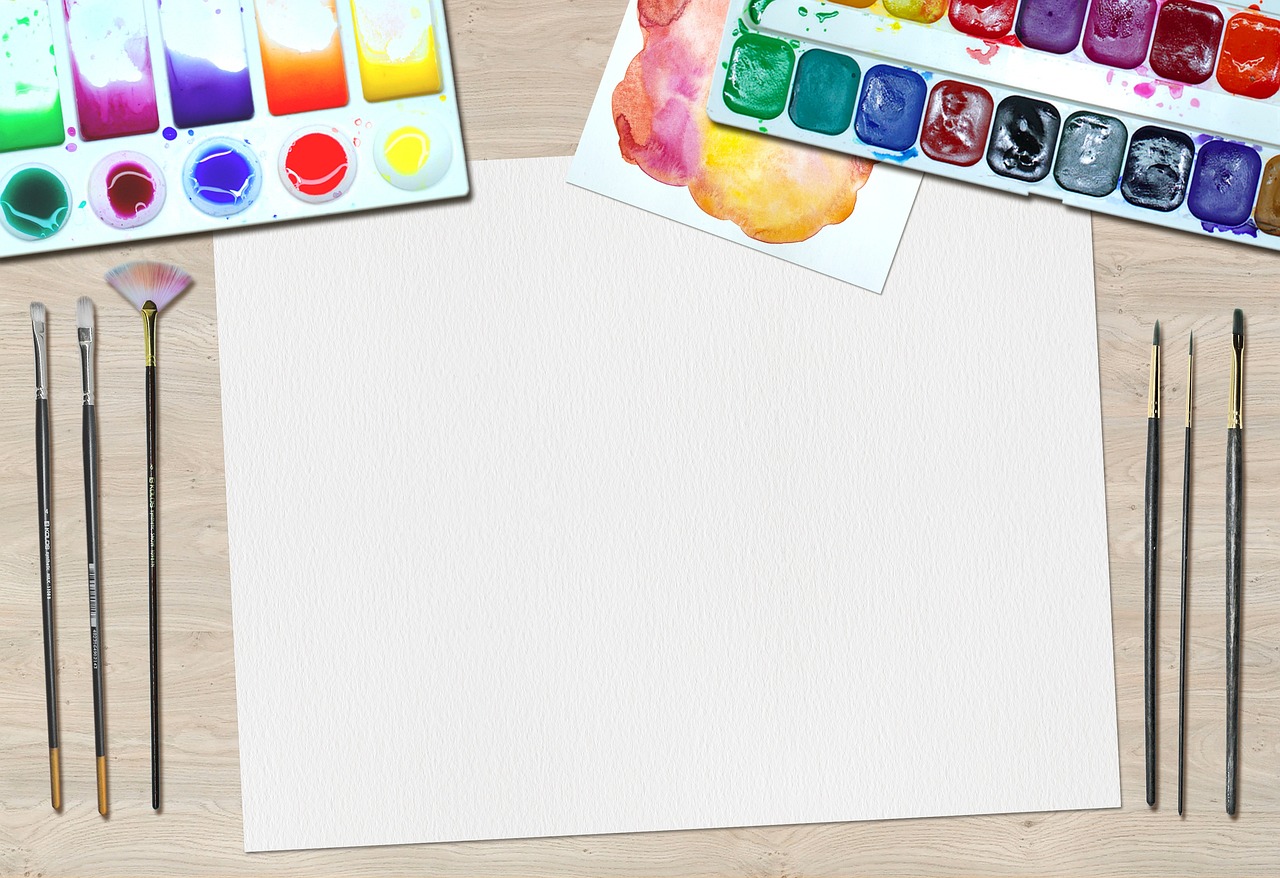
Etruscan Influence on Roman Art
The impact of Etruscan art on Roman artistic endeavors was profound and far-reaching. The Romans, known for their ability to assimilate and adapt cultural influences, were greatly influenced by the artistic styles and techniques of the Etruscans. From the intricate bronze sculptures to the vibrant frescoes, Etruscan artistry left an indelible mark on Roman artistic expression. The Romans not only adopted Etruscan motifs but also incorporated them into their own art forms, creating a unique blend of styles that defined Roman art for centuries to come.
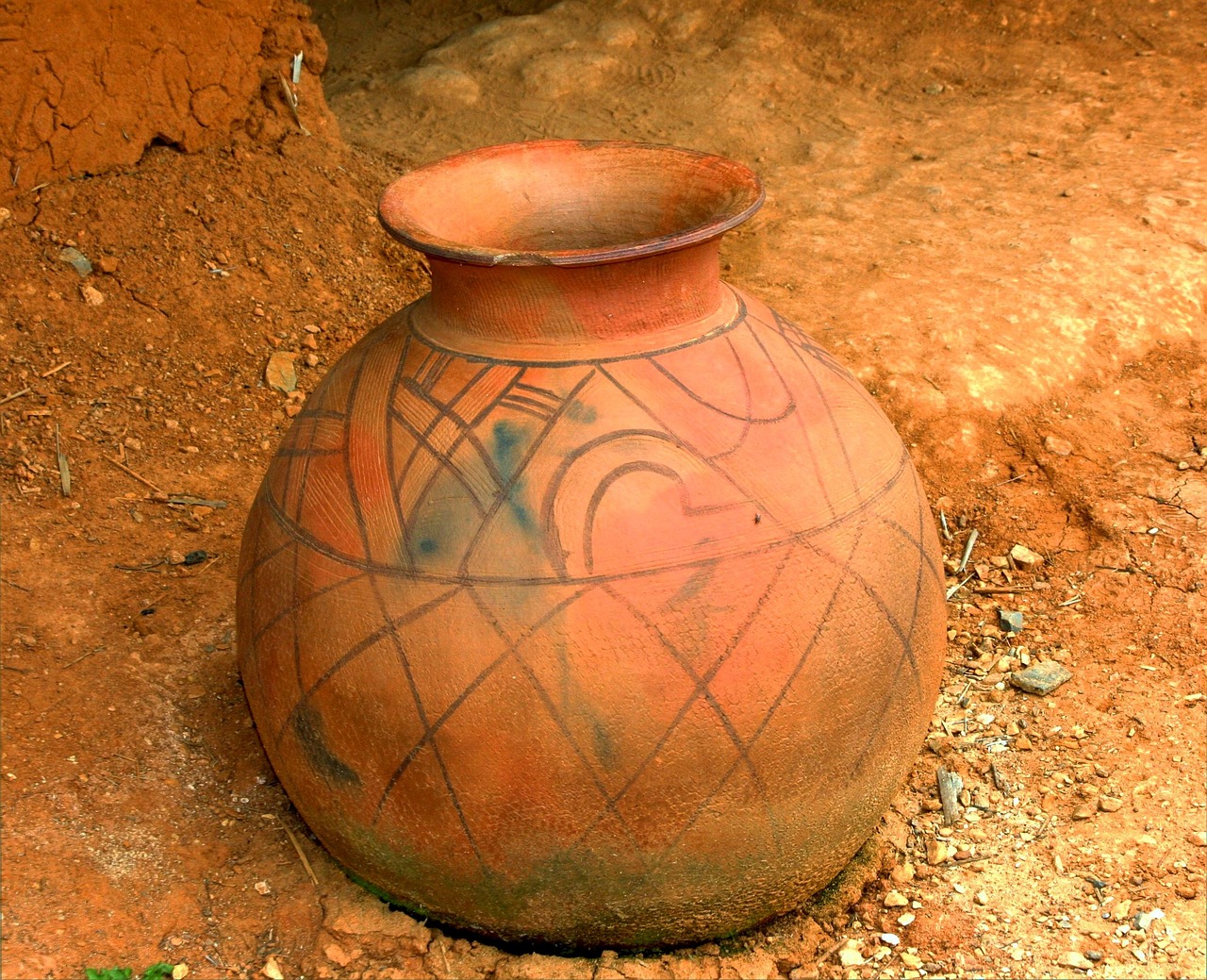
Etruscan Art in Daily Life
Art was not just a luxury for the ancient Etruscans but an integral part of their daily lives, permeating every aspect of their society. From the intricate patterns adorning their pottery to the jewelry they wore, art was a constant companion in the Etruscan world. Their homes were adorned with vibrant frescoes depicting scenes from mythology and daily life, adding color and beauty to their surroundings. Even everyday items like utensils and furniture were often embellished with artistic designs, showcasing the Etruscans' appreciation for aesthetic beauty.

Etruscan Art and Religion
The art of the ancient Etruscans was intricately intertwined with their religious beliefs, forming a profound connection between artistic expression and spirituality. Etruscan art served not only as a form of visual communication but also as a means of honoring and appeasing their gods and goddesses. Many of the artworks created by the Etruscans were dedicated to deities or depicted scenes from religious ceremonies, reflecting the importance of religion in their society.
One of the key aspects of Etruscan art and religion was the use of symbolism to convey spiritual meanings. Symbols such as the winged horse Pegasus or the serpent were often incorporated into artworks to represent divine forces or mythical beings. These symbols were believed to hold significant power and were used to invoke protection, guidance, or blessings from the gods.
Furthermore, Etruscan artists often depicted religious rituals and ceremonies in their art, providing a visual record of the spiritual practices of their culture. Scenes of priests conducting ceremonies, offerings being made to deities, or processions in honor of gods were common motifs in Etruscan art, offering a glimpse into the religious life of the ancient civilization.
Moreover, the Etruscans believed in the afterlife and the importance of proper burial practices for ensuring a peaceful transition to the next world. This belief in the continuity of existence beyond death influenced the creation of elaborate funerary art, including finely crafted sarcophagi, intricate tomb paintings, and valuable burial goods. These artworks not only served as tributes to the deceased but also as aids for the journey of the soul to the afterlife.
In conclusion, Etruscan art and religion were deeply intertwined, with artistic expression serving as a vehicle for conveying spiritual beliefs, rituals, and symbolism. The intricate artworks of the Etruscans not only reflect their cultural and artistic achievements but also offer insights into the religious practices and beliefs that shaped their civilization.
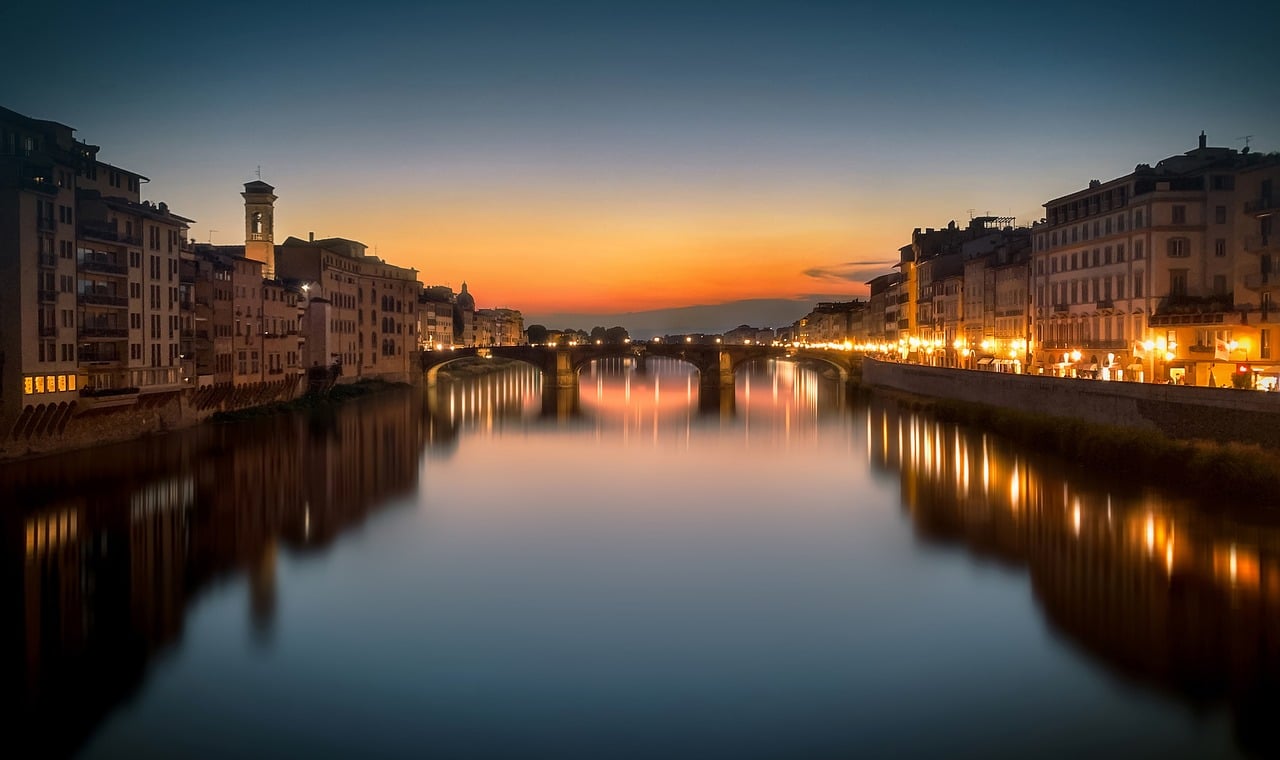
Etruscan Art Rediscovered
The rediscovery of Etruscan art in the modern era has sparked a renewed interest in this ancient civilization's artistic achievements. Archaeological excavations of Etruscan sites have unearthed a treasure trove of artworks, ranging from intricate bronze sculptures to colorful frescoes. These discoveries have provided valuable insights into the artistic techniques and cultural practices of the Etruscans.
One of the most significant aspects of the rediscovered Etruscan art is its influence on European art movements. Artists and scholars have drawn inspiration from the elegant designs and symbolic motifs found in Etruscan artifacts. The rediscovery of Etruscan art has not only enriched our understanding of ancient civilizations but has also contributed to the development of art history as a discipline.
Excavations at sites like Vulci, Tarquinia, and Cerveteri have revealed the extent of Etruscan artistic production and the sophistication of their craftsmanship. Sarcophagi adorned with intricate reliefs, delicate gold jewelry, and vibrant wall paintings have captivated art enthusiasts and historians alike.
The rediscovery of Etruscan art continues to fuel scholarly debates and artistic innovations. By studying and preserving these ancient artworks, we can ensure that the legacy of the Etruscans remains alive for future generations to appreciate and admire.
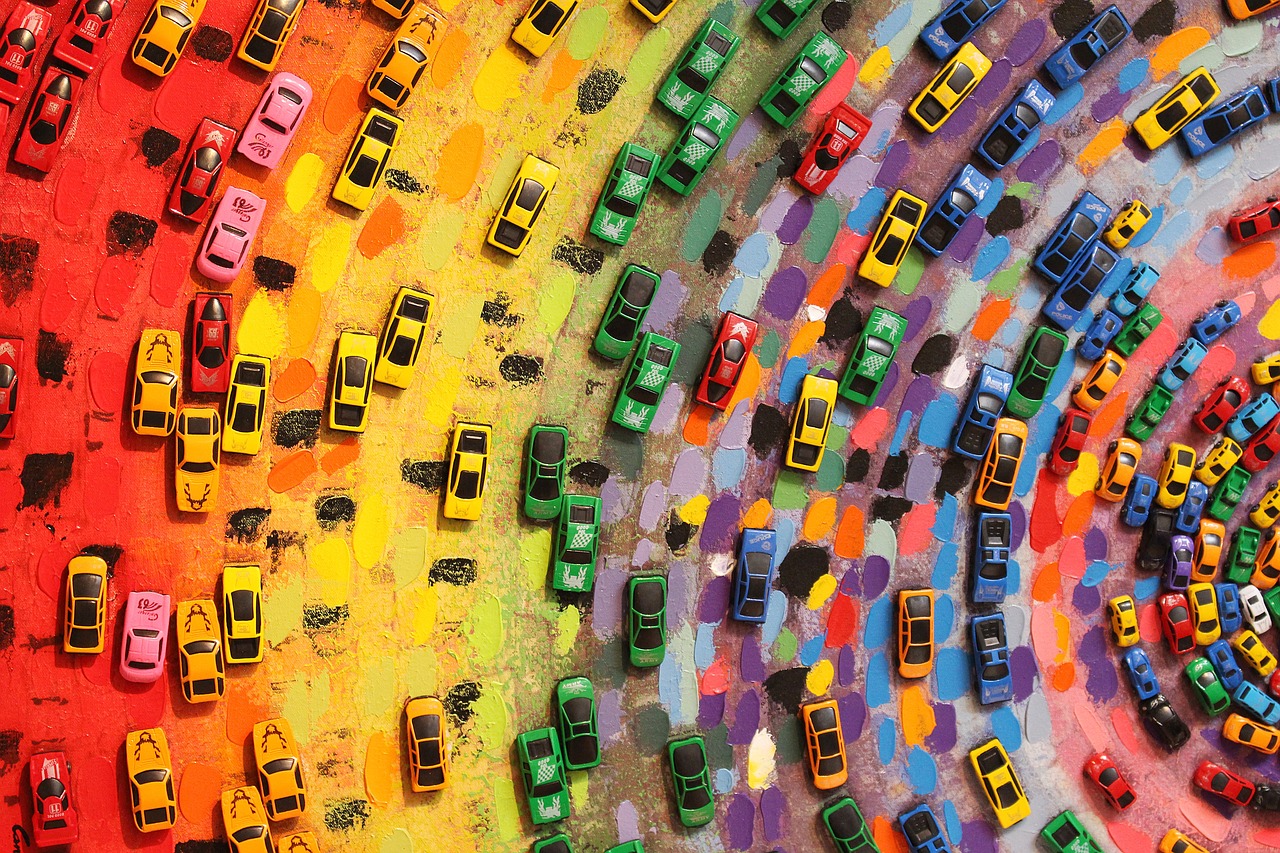
Etruscan Art Legacy
The legacy of Etruscan art continues to resonate through the corridors of time, leaving an indelible mark on the world of art and culture. The intricate designs, vibrant colors, and profound symbolism of Etruscan artworks have inspired generations of artists and art enthusiasts. From the terracotta sculptures that breathe life into ancient myths to the intricate frescoes that adorn the walls of tombs, Etruscan art speaks a universal language that transcends boundaries.
One of the most remarkable aspects of the Etruscan art legacy is its influence on contemporary art forms. Artists today draw inspiration from the Etruscans' bold artistic expressions and innovative techniques. The legacy of Etruscan art is not just a relic of the past but a living testament to the enduring power of creativity and imagination.
Moreover, the legacy of Etruscan art extends beyond the realm of visual arts. It has seeped into literature, fashion, and even architecture, shaping the cultural landscape in subtle yet significant ways. The Etruscans may have faded into history, but their artistic legacy continues to shine brightly, illuminating the path for future generations of artists and art lovers.
Frequently Asked Questions
- What is Etruscan art?
Etruscan art refers to the artistic creations of the ancient Etruscan civilization that thrived in central Italy before the rise of Rome. It includes a wide range of mediums such as bronze casting, terracotta sculpture, frescoes, and funerary art.
- What are some key characteristics of Etruscan art?
Etruscan art is known for its intricate symbolism, vibrant colors, and detailed depictions of daily life and mythological scenes. The Etruscans also had a strong connection between art and religion, with many artworks serving ritualistic purposes.
- How did Etruscan art influence Roman art?
The Etruscans had a significant impact on Roman art, influencing styles, techniques, and motifs. Roman artists often incorporated Etruscan elements into their own works, leading to a fusion of artistic traditions.
- What is the significance of Etruscan funerary art?
Etruscan funerary art played a crucial role in the burial rituals and beliefs of the civilization. Intricate sarcophagi, tomb paintings, and burial goods reflected the Etruscans' views on the afterlife and their cultural practices surrounding death.
- How has Etruscan art been rediscovered in modern times?
Etruscan art experienced a revival in the modern era through archaeological excavations and scholarly research. The rediscovery of Etruscan sites and artifacts has provided valuable insights into this ancient civilization's artistic achievements.







